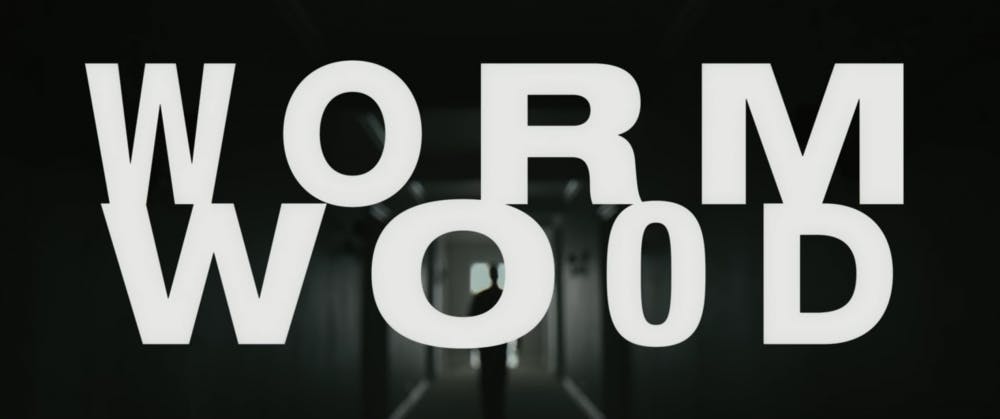There are a number of reasons for which hotel–room windows don’t open. One of them is to prevent guests from smoking and tossing lit cigarettes outside—but in 1950’s New York City, smoking was ubiquitous, still very much in vogue, and not necessarily thought of as a hazard. On the night of November 28, 1953, the window of room 1018A in the Hotel Pennsylvania was wide–open. Ten stories below, a figure with twisted limbs was lying on the pavement outside the building. The body belonged to Frank Olson, a biological warfare scientist and loving father of three children. They were soon told that their dad had died as a result of “jumping or falling” out the window.
The vagueness of that phrase bothers Eric Olson—Frank’s son—to this day. What happened in room 1018A? Did Frank jump, or fall? Wormwood doesn’t aim to answer this question; rather, it sets out to eliminate it entirely. In fact, it is another question that haunts Eric, and implicitly the documentary itself: by whose hands did Frank die?
The possibility of murder first occured in 1975, in the aftermath of two groundbreaking exposés: a New York Times story in which Pulitzer prize–winning journalist Seymour Hersh reveals a secret domestic surveillance CIA program, and the Rockefeller Commission report, which discloses that an “unwitting civilian” had been given LSD as part of an experiment prior to his death in 1953. In an interview with Street, David Rudovsky, a Penn Law professor and one of the two attorneys of the Olson family, describes the moment when Eric—a close friend of Rudovsky—realized who the civilian in question was: “I remember it all like it was yesterday. I had read the Rockefeller report, but hadn’t given much thought to the LSD incident. When it broke in the newspapers, there was an illustration of someone falling out of a ten–story building. Later that night, Eric called, and said, ‘that’s my father’. He told me the CIA had even called the Olsons to let them know this was being published. That sort of confirmed it.”
In the six episodes of the newly–released Netflix series, director Errol Morris blends documentary and fictional techniques in an attempt to provide viewers with a better understanding of this enigmatic incident. The film delivers nothing more and nothing less than a quasi–journalistic account, sprinkled with award–worthy reenactments of the events that led up to the tragic night. Wormwood could be said to be a documentary, if only the story itself, 65 years after the incident that inspired it, hadn’t been so blurry still. Eric’s quest for the truth only leads to more mysteries, and what makes Morris’s approach interesting is how he chooses to frame reality and fiction: the facts presented in the official CIA report given to the family are what the fictional, artistic part is based on, while the interviews are mostly dominated by Eric’s storytelling.
But why would anyone want Frank Olson dead? At the moment the news broke, not even the Olsons could understand. They know now that Frank was not only a bacteriologist, but also a CIA employee. The agency provided an almost scripted narrative: Frank developed a mental disorder after being given LSD, and killed himself little under two weeks later. But as Rudovsky says, and as Wormwood masterfully shows, the report “didn’t make any sense.” In the context of a lawsuit, the question of whether to settle or not was one of finding the truth, or seeing justice being served: “There was some division there. You could sue the United States for negligence, but couldn’t sue for potential misconduct. So, if our claim was murder—and we didn’t really have any evidence or motive that point—then the family would not be entitled to any compensation. Alice [Frank’s wife] decided to settle, but Eric continued to think that there was something more to what the Government had said.”
This is where Morris’s craft shines through. Throughout the film, Eric’s fixation on solving the mystery of his father’s demise seems justified: the clock in the interview room is set to the exact time of Frank’s death; his mother’s stark affirmation—“You will never know what happened in that room”—is repeated obsessively and occasionally layered on top of white noise; and the shots themselves, sometimes vertigo–inducing, are put together in a manner very similar to the collage technique that Eric developed as a coping mechanism.
Due to the blend of Morris’s creative prowess and the facts it presents, Wormwood could be said to lie in the gray area between a documentary and a movie. The reality of Frank’s death is classified, and can only be assumed. As Rudovsky says, one of the people who is closer to knowing it for certain is none other than Seymour Hersh: “Hersh has told Eric that he looked into it further in the last couple of years, and that he had a very reliable source within the CIA who basically told him that [Frank] was murdered. But he can’t disclose this—it’s only one source, and it would put them in jeopardy. It’s disappointing to Eric, and I think that’s disappointing to a lot of people. But that’s Hersh’s journalistic ethics: unless he gets confirmation from somebody else, or decides to go public, that’s where we stand.” Perhaps the rest of us will never know what happened in that room.
The quotes in this article have been edited for brevity and clarity. ‘Wormwood’ is currently streaming on Netflix.

